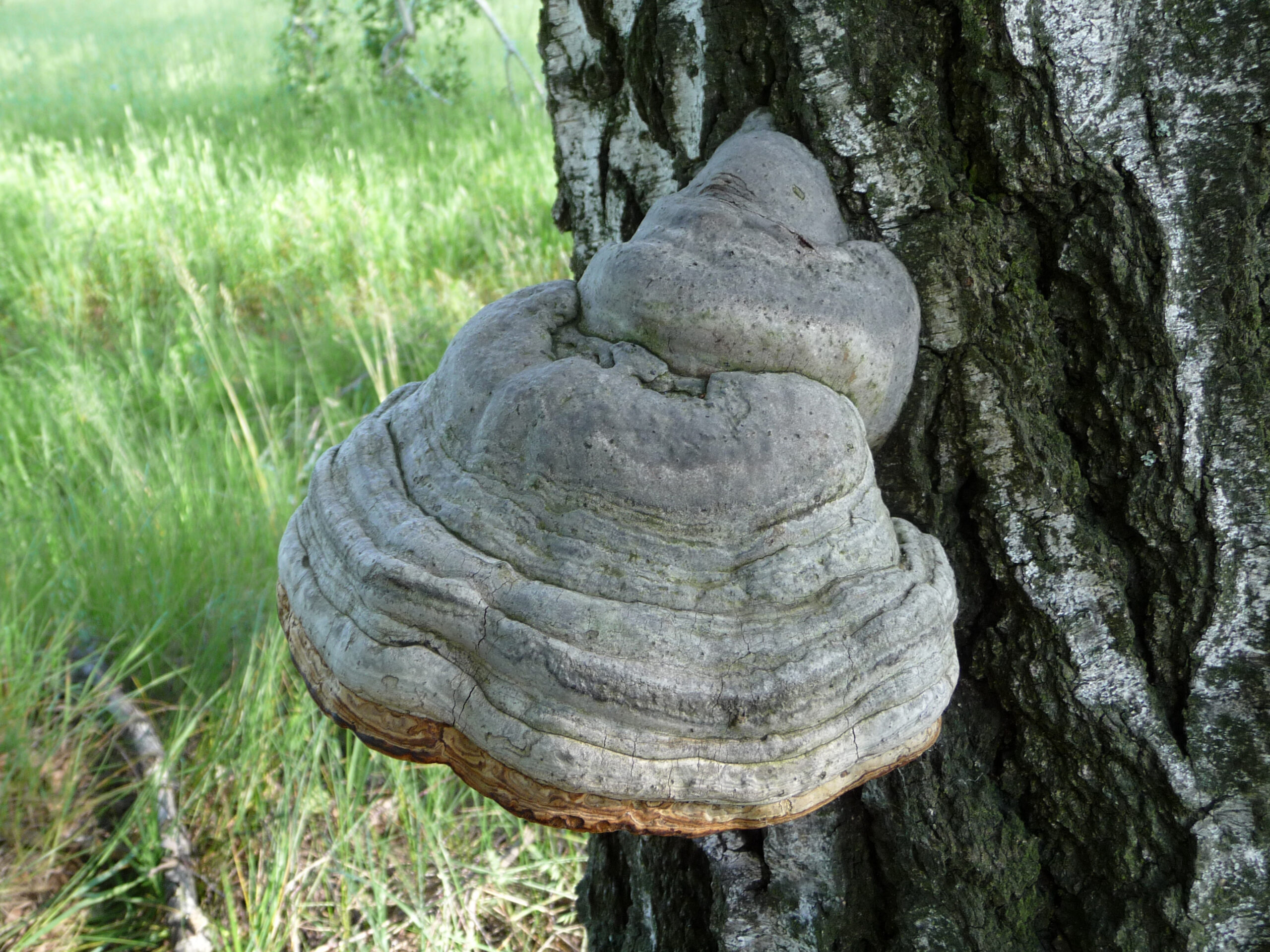Forget about tinder matches – mother nature has its own fire starting mushroom: the Hoof Mushroom. Also known as amadou or the tinder polypore, the Hoof Mushroom (Fomes fomentarius) is a unique fungus that allowed ancient peoples to start fires, and safely move fire from one area to another. Let’s explore how you can use this fire starting mushroom just as our ancient ancestors did!
The Hoof Mushroom’s Appearance: A Woody Wonder
The Hoof Mushroom is easily recognizable by its distinctive appearance. Sporting a tough, woody texture, its fruiting body takes on the shape of a hoof, inspiring its common name. The upper surface is typically dark grey and crusty, while the underside reveals a millions of tiny, almost microscopic, pores.
The Hoof Mushroom is found on tree bark, particularly on birch and beech trees. It plays a vital role in the forest by breaking down old trees, helping to keep the environment healthy.

Useful Traditions: Firestarter and Survival Tool
In the past, people discovered practical uses for the Hoof Mushroom. Its inner fibers were perfect for starting fires, providing an essential tool for survival. There are many historical accounts of the Hoof Mushroom being used as tinder; ranging from the viking civilizations of Northern Europe to ancient nomadic tribes around the world. Even Ötzi the Iceman, a miraculously intact mummified corpse of a man who lived around 3000BC had this mushroom in his survival pack.

While the outside of the Hoof Mushroom is dense and woody, the inside is more fleshy and leathery. When dried correctly (or charred like charcloth), this leathery fiber can hold an ember and keep it smoldering over long periods of time. The idea was that one could move an ember from one place to another without having to create a spark – which is particularly useful in damp, rainy, or windy conditions.

Cultural Significance: Teas, Rituals, and Health Beliefs
Various cultures have considered the Hoof Mushroom special. Some brewed teas from it, while others incorporated it into rituals, believing in its potential health benefits. Historical accounts also claimed that the mushroom has anti-inflammatory and antibiotic properties.
Present-day Allure: Crafting and Ongoing Exploration
Today, the Hoof Mushroom continues to captivate interest. Its sturdy texture makes it a sought-after material for crafting, and enthusiasts are still exploring potential modern applications and benefits. Even famous mycologist Paul Stamets is known for regularly wearing a hat made out of amadou “leather”.
Conservation Matters: Safeguarding the Hoof Mushroom’s Habitat
While the Hoof Mushroom isn’t endangered, preserving its habitat is crucial. This ensures the continued existence of this fascinating fungus in our forests. There’s a lot we don’t know about mushrooms; and there’s a lot of mushrooms that we don’t know about, so keeping our ecosystem intact is necessary for fungi enthusiasts (like yourself!) to continue pursuing their passion for nature.
If you want to learn how to correctly identify and forage for mushrooms like the fire starting Hoof Mushroom, be sure to check out our comprehensive courses available here at Think Fungi! (Cultivation courses available too!)
